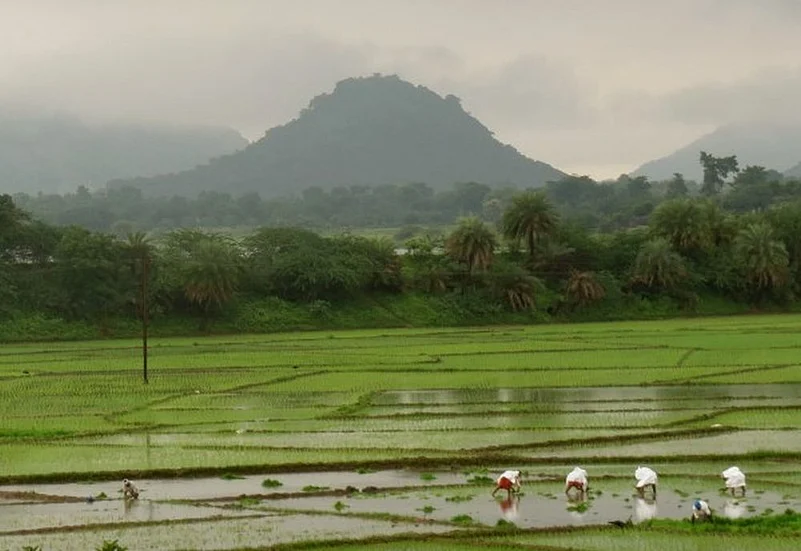The way Andhra Pradesh changes its looks during monsoons is worth a long and leisurely watch if one passes by its countryside. It’s the same southern state that otherwise looks largely barren under a hot sun across its plains defined by a profusion of thorny bushes.
Later, come winter, and central India drapes itself under dotty yellow blankets extending till the azure-blue horizon. Vast swathes of mustard fields in Bundelkhand and Brajbhoomi bloom with flowers that turn the land magically different from their largely prosaic appearance the rest of year.

These are just a couple of examples on how the visuals of a region can impress people, more so the non-natives on the move. It needn’t apply to just nature watch. The other day, a renowned classical danseuse said that she would constantly ask her students to choose the “scenic route” in any kind of art, given the deeper experience it can lend to one’s career and life as a whole. It is “a long haul”, agreed Bharatanatyam exponent Malavika Sarukkai, but such a journey requires the pursuers “to have passion and be inspired themselves”, she noted a talk in Delhi the other day.
Advertisement
The 58-year-old Padma awardee, known for her quest to portray emotions beyond love and separation between lovers typical of her Dravidian performing art, went on to trail back and cite reasons for her branching out paths she thought can put Bharatanatyam searching more about spirituality and independence. “For the first two decades, I blithely followed my gurus and what they taught me. I remember at one point people began saying my dance had become devoid of joy. But not many understand that I got to that point of austerity and then discovered freedom. I found the things I needed to hold on to and the ones I could let go—be authentic, honest and step out of the boundaries,” she told the audience invited by the nascent Raza Foundation with author-scholar Sudha Gopalakrishnan as the anchor.
Advertisement
There are too many quick-fixes around in teaching dances and none of these is capable for inspiration, Sarukkai added.
Overall, what Sarukkai points out goes well with the art-lover as well. For, dance is an art that should ideally be inspire the viewer, too. And for this to happen, the shows should be watched live and in real. A quantum leap in technology today keeps feeding even the part-reluctant crowd around the arts with stuff on a regular basis. Social media gives a lot of reach to, say, dance circles—and the browser casually stumbles upon one video or the other of some Kathak or Mohiniyattam presented in some part of India (or the world). The result of such shows popping up on the computer screen, tablet or cellphone can gift the surfer with fatigue.
One way of augmenting (and thus streamlining) one’s own pursuit of dances is to visit the venues (instead of relying on recorded versions later or even live-streaming). Not only would such ventures give a first-hand and almost tactile feel of the art on stage; such shows facilitate direct interaction with fellow spectators, some of who can add to one’s knowledge and insight about the art. Also, there is the option of meeting the artistes backstage or in the greenroom—such brief chats can lead to detailed conversations over a period of time, enriching clearer views about the art and its ethos.
Advertisement
A YouTube clip or a Facebook/WhatsApp discussion on the arts may have its value in somebody’s progression as an aesthete. But the primary resource of enrichment of beauty ideally happens from roaming about at, say, the halls of Margazhi venues in Chennai, or festivals at Mamallapuram, Khajuraho, Konark, Modhera, Ajanta-Ellora et all to the lesser-known but possibly more focused events in other parts of the country. There needn’t even be an attitude to select or filter at one stage, which can continue in some or cease in others.

Going back to the “scenic route”, increasing material luxuries have, on the flip side, deprives the new generation of certain possible introductory art matters that pop during travel on land. Road and rail transport exposes the traveller to the geographical features of a territory, thereby often helping relate them to art forms endemic to it. A Muruga temple up on the hills giving sight through the iron-rod windows of the train can enable the art-loving viewer relate closer to a concept or two about the peacock-mounted Hindu god, who is lauded in a Tamil composition in the next Carnatic concert or a Kuchipudi recital (s)he attends back in one’s city.
Advertisement
For long-distance journeys, flights have (inevitably) become a norm in India. Lovers of culture, though, should try surface transport at least occasionally in a professionally busier and materially richer world.






_(1).JPG?w=801&auto=format%2Ccompress&fit=max&format=webp&dpr=1.0)













